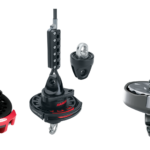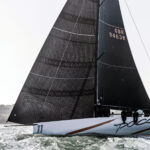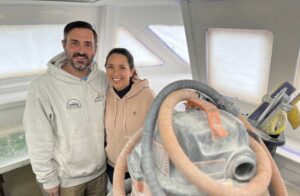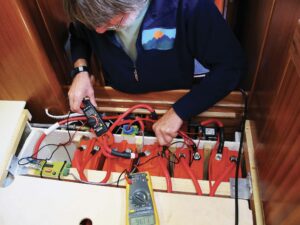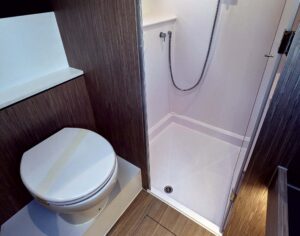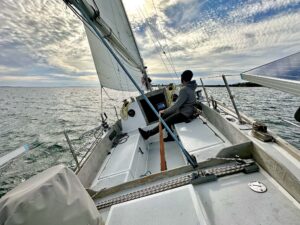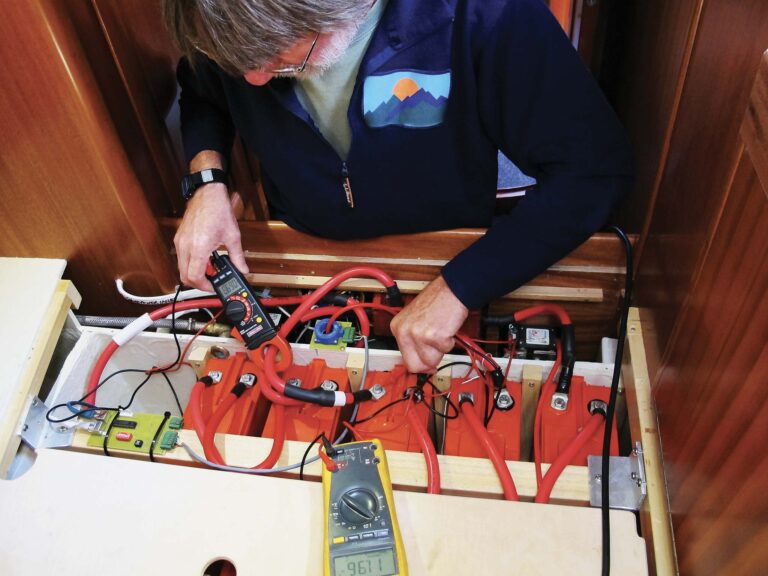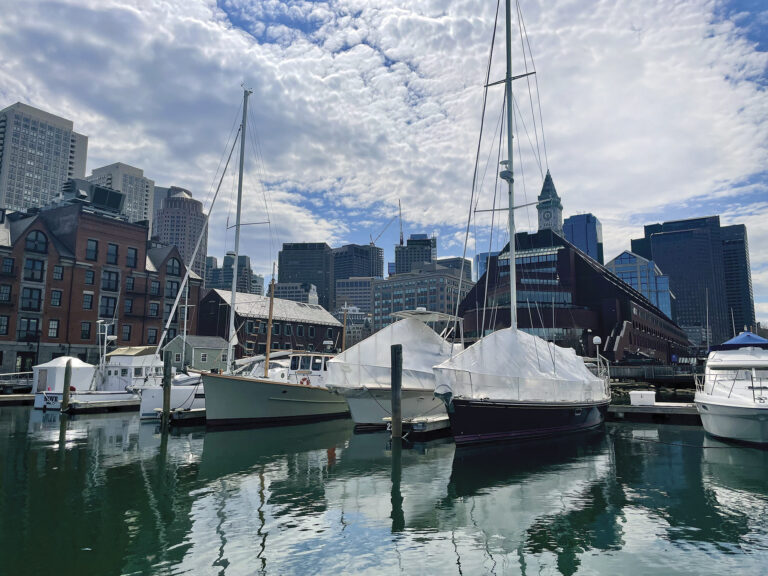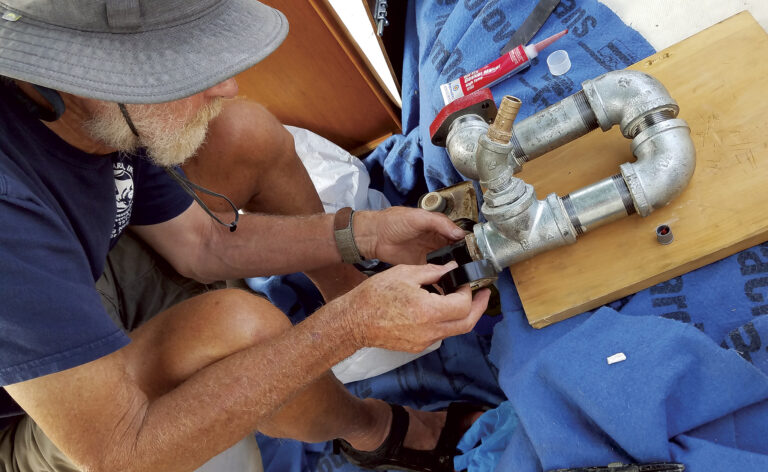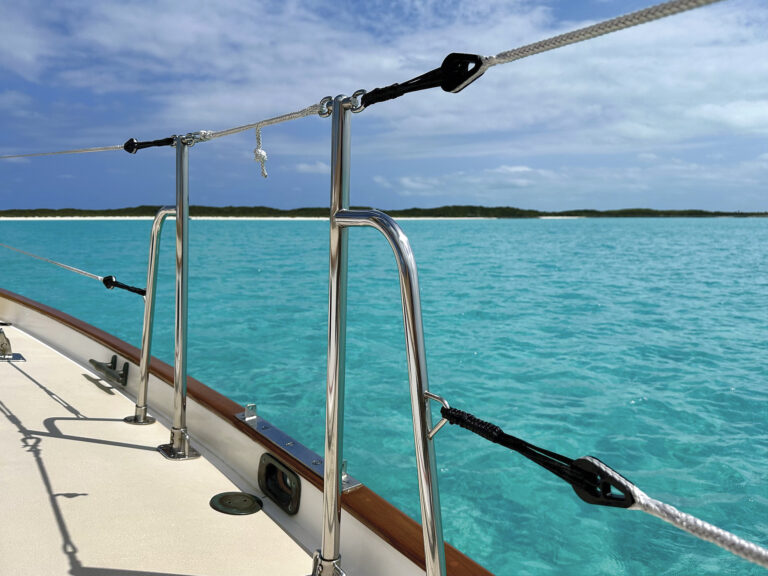
In the second of a two-part series on light-air sails, Rupert Holmes looks at how today’s furling gear has revolutionized sail handling off the wind. Read part 1 here.
It’s easy to look at long-distance racing yachts of 60ft and above with multiple downwind sails set on roller furling gear and assume similar setups are ideal for cruising yachts. To some extent this is true, and much of the excellent gear now used on cruisers was first developed aboard such craft. However, there can also be problems with applying the same principles to smaller boats and different sails. It’s therefore important to understand the pros and cons of each system.
Snuffers
Little more than a decade ago a snuffer—basically, a long, cloth tube with a line, or lines for pulling it down over a deployed sail—was the only device a cruising sailboat was likely to carry for handling light-air downwind sails, and these still have their place, in particular with symmetrical spinnakers and asymmetrics designed for sailing deep downwind. Used correctly, they are also well proven and have helped many thousands of sailors with sets and douses they might otherwise have found challenging, if not impossible to control.
That said, there are several common mistakes found when using snuffers—for example, when the crew tries to haul directly downward on the retrieval line. This works fine on smaller boats or in very light airs, but can a recipe for disaster on larger yachts in more breeze. Instead, lead the line through a snatch block on deck, so that tension in the line pulls you toward the boat, not into the air.
Other problems generally stem from the skipper not bearing away sufficiently to blanket the sail in the lee of the mainsail while pulling the snuffer down or failing to flake out the tack line and sheet beforehand so that they run freely and don’t snag.
While on the subject of spinnakers designed for sailing deep downwind, another “old school,” but still effective, device is the Spinnaker Tacker from ATN Inc., which creates an adjustable tack point on the forestay for either a symmetrical spinnaker or A-sail. The advantage to this system is that it gets the sail up and away from the deck into clear air without having to resort to a pole. In concert with the ATN Spinnaker Sleeve, a nicely designed snuffer system, it provides an excellent means of keeping your boat moving in the light stuff.
Bottom line: don’t discount old technologies, like snuffers, as no longer relevant. The world’s leading sailmakers don’t, often advising clients aboard even largers boats to still go with them.

Code 0 furlers
Flat-cut Code 0 reaching headsails built with an anti-torque line sewn into their luffs work especially well on a continuous-line furler, which makes them easy to deploy and recover. First used in such prestigious events as the Volvo Ocean Race and Vendée Globe, these well-proven devices are now available from a range of manufacturers, including Harken, Karver, Ronstan, Profurl, Facnor, Seldén and Colligo Marine.
Sailing under a Code 0 can generate a surprising amount of apparent wind and therefore power. Not surprisingly, it’s easier to furl the sail in lighter winds. The good news is that this can be achieved simply by turning downwind. No need to bust a blood vessel trying to imitate one of the grinders in the VOR!
Note that while it’s possible to buy stanchion guides for the furling line, I’ve never felt the need to fit them. Given the fact it’s not a good idea to leave the furled sail hoisted as anything other than a temporary measure, having to rig and un-rig a set of stanchion guides just makes for a lot of extra work.
A much greater challenge for many existing boats is finding a suitable point to which the furler can be attached. This is especially true aboard designs with the forestay mounted right forward, in which case a retrofitted sprit may be the best option. Because significant halyard tension is required for a Code 0 to set properly, an effective bobstay will also likely be needed. This explains why some retractable sprits designed for conventional asymmetric spinnakers are not up to the job of handling a Code 0.
This close-up view of a Ronstan top-down furler shows how the “floating collar” with attachment points for the tack of an A-sail is isolated from the drum turning the torque line (left); The robust torque-line attachment is clearly evident in this top-down furler (middle); The head and drum units of a lightweight furling unit for smaller boats (right)
The continuous-line furling used to control the Code 0 aboard this performance cruiser can be easily seen on the end of the fixed sprit
The lack of torque rope in this racing Code 0 means the sail weighs less and there is no need to keep the luff bar-tight for furling
Top-down Furlers
Top-down furlers were developed for free-flying asymmetric spinnakers in which an anti-torque rope cannot be incorporated into the luff of the sail because of their dramatic luff curves. Although the furling operation takes place at deck level, an anti-torque line connecting the furler to the top swivel starts the latter turning while the tack of the sail remains stationary. The head and belly of the sail then wrap around the torque line before the lower part of the sail starts to furl, seemingly solving the problem of A-sail handling once and for all.
Be warned, though, a sail designed for use with a top-down furler can’t be designed with as much luff curve as a true downwind asymmetric. The reason for this is that it becomes problematic, if not impossible, to neatly furl all that additional sailcloth in middle of the sail. This, in turn, means the sail won’t set at angles as close to dead downwind as a sail with a conventional snuffer. These being the angles many cruisers like sailing the most, the old-school snuffer therefore still comes out on top aboard many boats.
Cable-free Code 0
Cable-free Code 0 furlers are a recent development that has the potential to significantly shake up the market. Again, conventional Code 0s have a heavy anti-torque rope in the luff that ensures the top swivel turns along with the tack of the sail when furling. With a cable-free sail, however, this torque line is largely replaced by an array of structural fibres arranged in a lens-like shape in the area of the luff.
On paper, this may sound like a small distinction, but the reality can mean a dramatic difference. For starters, less luff tension is needed, since there’s no longer the need to keep the luff/torque-line straight in order for the sail to furl correctly, which reduces rig and sprit loads. It also enables a furling sail to fly with its luff curve forward of where a torque line would have otherwise been in the same way as an asymmetric spinnaker. This makes it easier to fill at deeper downwind angles while maintaining the easy handling of a regular Code 0.
In the past few seasons, these sails have been successfully trialed on a number of large raceboats, and there’s every chance they will eventually become a feature aboard cruising boats as well. All the major sailmakers seem to agree that we’ve only just started to see the potential of these sails.
Something to note: as is so often the case with sails, it’s worth noting that different sailmakers have different terms for this technology. North Sails, for instance, refers to its cable-free technology as Helix while Doyle calls it Cable-less, and Elvstrøm offers what it calls Cable Free.

Best Practices
Although it’s easy to assume Code 0s and free-flying nylon downwind sails can be hoisted on the furler before leaving the dock and then left up all day to make the transition from headsail to spinnaker as hassle-free as possible, that’s not a realistic expectation.
The problem is that the loose “bunt” of the spinnaker is liable to take an extra wrap around the furl and jam. Similarly, Code 0s should not be left permanently hoisted as there is a risk of the wind catching the leech. A progressively larger proportion of the sail will then unravel and flog, with the risk of causing the whole thing to unfurl. As someone who once experienced a 700ft sail unfurling during a 25-knot squall in a narrow channel, I can state this is something you most definitely do not want to experience! Instead, these kinds of furlers should be seen as a means of easily dowsing the sail, rather than storing it hoisted for anything other than a short period in settled conditions.
With respect to gybing, while this is the point at which many handling problems occur, whether with an asymmetric or symmetrical spinnaker, there’s an easy and simple solution: don’t gybe the sail. Instead, snuff or furl it, gybe the mainsail and then reset the kite at your leisure, maybe after pausing for a coffee.
Finally, while you occasionally see yachts running downwind with only an asymmetric kite set—and the simplicity of this setup is certainly appealing—it’s worth thinking of what could happen if things go wrong. Specifically, good racing teams, in particular, routinely use the main and headsail to blanket the kite when dousing it. However, with no mainsail you no longer have this an option in the event of a rapid change of weather.
Resources
ATN Inc. atninc.com
Colligo colligomarine.com
Doyle doylesails.com
Elvstrøm elvstromsails.com
Facnor facnor.com
Harken Inc. harken.com
Karver karver-systems.com
North Sails northsails.com
Profurl profurl.com
Quantum quantumsails.com
Ronstan ronstan.us
Seldén seldenmast.com
UK Sailmakers uksailmakers.com
Rupert Holmes has over 80,000 miles of offshore experience, including racing doublehanded around Great Britain and across the Atlantic. He has also cruised from New Zealand around Cape Horn, into the Beagle Channel and on to the Falklands and Uruguay. These days he divides his time between long-distance solo and doublehanded racing and cruising in the Mediterranean
April 2019

